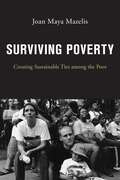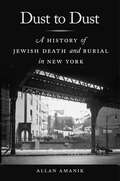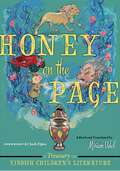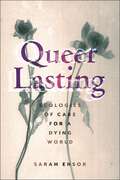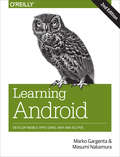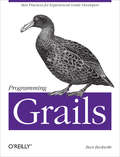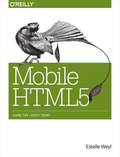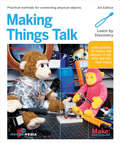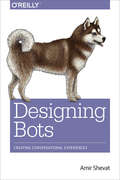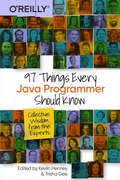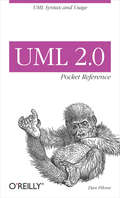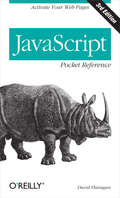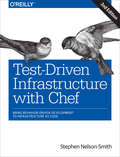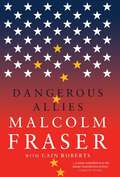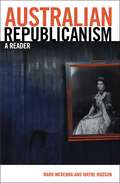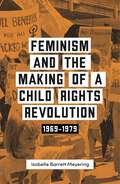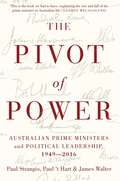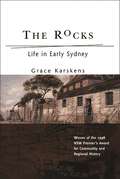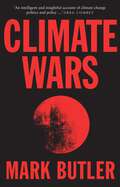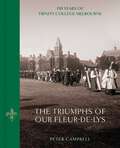- Table View
- List View
Surviving Poverty: Creating Sustainable Ties among the Poor
by Joan Maya MazelisSurviving Poverty carefully examines the experiences of people living below the poverty level, looking in particular at the tension between social isolation and social ties among the poor. Joan Maya Mazelis draws on in-depth interviews with poor people in Philadelphia to explore how they survive and the benefits they gain by being connected to one another. Half of the study participants are members of the Kensington Welfare Rights Union, a distinctive organization that brings poor people together in the struggle to survive. The mutually supportive relationships the members create, which last for years, even decades, contrast dramatically with the experiences of participants without such affiliation. In interviews, participants discuss their struggles and hardships, and their responses highlight the importance of cultivating relationships among people living in poverty. Surviving Poverty documents the ways in which social ties become beneficial and sustainable, allowing members to share their skills and resources and providing those living in similar situations a space to unite and speak collectively to the growing and deepening poverty in the United States. The study concludes that productive, sustainable ties between poor people have an enduring and valuable impact. Grounding her study in current debates about the importance of alleviating poverty, Mazelis proposes new modes of improving the lives of the poor. Surviving Poverty is invested in both structural and social change and demonstrates the power support services can have to foster relationships and build sustainable social ties for those living in poverty.
Dust to Dust: A History of Jewish Death and Burial in New York (Goldstein-Goren Series in American Jewish History #7)
by Allan AmanikA revealing look at how death and burial practices influence the livingDust to Dust offers a three-hundred-year history of Jewish life in New York, literally from the ground up. Taking Jewish cemeteries as its subject matter, it follows the ways that Jewish New Yorkers have planned for death and burial from their earliest arrival in New Amsterdam to the twentieth century.Allan Amanik charts a remarkable reciprocity among Jewish funerary provisions and the workings of family and communal life, tracing how financial and family concerns in death came to equal earlier priorities rooted in tradition and communal cohesion. At the same time, he shows how shifting emphases in death gave average Jewish families the ability to advocate for greater protections and entitlements such as widows’ benefits and funeral insurance. Amanik ultimately concludes that planning for life’s end helps to shape social systems in ways that often go unrecognized.
Honey on the Page: A Treasury of Yiddish Children's Literature
by Jack Zipes Isaac Metzker Moyshe Kulbak Kadya Molodowsky Sholem Asch David Rodin Yaakov Fichmann Yankev Pat Zina Rabinowitz Levin Kipnis Malka Szechet Mordkhe Spektor Rokhl Shabad Ida Maze Solomon Bastomski Jacob Reisfeder Judah Steinberg David Ignatov B. Alkvit Leon Elbe Benjamin Gutyanski Solomon Simon Der Tunkeler Leyb Kvitko Eliezer Shteynbarg Lit-Man Meyer Ziml Tkatch Moyshe Shifris Khaver Paver B. Oyerbakh Sarah LiebertWinner, 2021 Reference & Bibliography Award in the 'Reference' Section, given by the Association of Jewish LibrariesAn unprecedented treasury of Yiddish children’s stories and poems enhanced with original illustrationsWhile there has been a recent boom in Jewish literacy and learning within the US, few resources exist to enable American Jews to experience the rich primary sources of Yiddish culture. Stepping into this void, Miriam Udel has crafted an exquisite collection: Honey on the Page offers a feast of beguiling original translations of stories and poems for children. Arranged thematically—from school days to the holidays—the book takes readers from Jewish holidays and history to folktales and fables, from stories of humanistic ethics to multi-generational family sagas. Featuring many works that are appearing in English for the first time, and written by both prominent and lesser-known authors, this anthology spans the Yiddish-speaking globe—drawing from materials published in Eastern Europe, New York, and Latin America from the 1910s, during the interwar period, and up through the 1970s. With its vast scope, Honey on the Page offers a cornucopia of delights to families, individuals and educators seeking literature that speaks to Jewish children about their religious, cultural, and ethical heritage.Complemented by whimsical, humorous illustrations by Paula Cohen, an acclaimed children’s book illustrator, Udel’s evocative translations of Yiddish stories and poetry will delight young and older readers alike.
Queer Lasting: Ecologies of Care for a Dying World (Sexual Cultures)
by Sarah EnsorWhat queer modes of resilience and care can teach us about enduring environmental collapseWhat does it mean to live at the end of life, the end of a family line, the end of a species, or the end of the future itself? When faced with unfurling catastrophes, environmentalists often limit the conversation by focusing on the future. Activists work for the welfare of future generations, while scientists labor over projections of future outcomes. In Queer Lasting, Sarah Ensor asks what this emphasis on the future makes unthinkable. She looks to queer scenes of futurelessness to consider what ecocriticism can learn from queer theory, which imagines and inhabits the immanent ethical possibilities of a terminal present. While living “at the last” is often a terrifying prospect, queer culture reminds us that “to last” is itself also one way to go on. Defining queerness as a mode of collective life in which these paradigms of lasting—ending and persisting—are constitutively intertwined, Ensor turns to two periods of queer extinction for models of care, continuance, and collective action predicated on futurelessness: the 1890s, in which existing forms of erotic affiliation were extinguished through the binary of homo/heterosexuality, and the 1980s, in which the spread of the AIDS epidemic threatened the total loss of gay lives and of specific erotic ways of life. Through readings that trace unexpected formal resonances across the works of Sarah Orne Jewett, Willa Cather, Melvin Dixon, Essex Hemphill, Allen Barnett, and Samuel Delany, Queer Lasting maintains that queer writing, in its intimacy with death and loss, offers a rich archive for imagining new ways of thinking through environmental collapse. Whether confronting the epidemic contours of the AIDS crisis, theorizing the temporary encounters of cruising, or reckoning with the lives of non-reproductive subjects, this book about futurelessness is also a book about persistence. It demonstrates how, far from giving up in the face of the terminal paradigms that environmentalism fears, queer culture has instead predicated its living—and its lasting—upon them.
Learning Android: Develop Mobile Apps Using Java and Eclipse
by Marko Gargenta Masumi NakamuraWant to build apps for Android devices? This book is the perfect way to master the fundamentals. Written by experts who have taught this mobile platform to hundreds of developers in large organizations and startups alike, this gentle introduction shows experienced object-oriented programmers how to use Android’s basic building blocks to create user interfaces, store data, connect to the network, and more.Throughout the book, you’ll build a Twitter-like application, adding new features with each chapter. You’ll also create your own toolbox of code patterns to help you program any type of Android application with ease.Become familiar with the Android platform and how it fits into the mobile ecosystemDive into the Android stack, including its application framework and the APK application packageLearn Android’s building blocks: Activities, Intents, Services, Content Providers, and Broadcast ReceiversCreate basic Android user interfaces and organize UI elements in Views and LayoutsBuild a service that uses a background process to update data in your application
Programming Grails: Best Practices for Experienced Grails Developers
by Burt BeckwithDig deeper into Grails architecture and discover how this application framework works its magic. Written by a core developer on the Grails team, this practical guide takes you behind the curtain to reveal the inner workings of its 2.0 feature set. You’ll learn best practices for building and deploying Grails applications, including performance, security, scaling, tuning, debugging, and monitoring.Understand how Grails integrates with Groovy, Spring, Hibernate, and other JVM technologies, and learn how to create and use plugins to augment your application’s functionality. Once you know how Grails adds behavior by convention, you can solve problems more easily and develop applications more intuitively.Write simpler, more powerful code with the Groovy languageManage persistence in Grails, using Hibernate or a NoSQL datastoreLearn how Grails uses Spring’s functionality and optional modulesDiscover how Hibernate handles details for storing and retrieving dataIntegrate technologies for messaging, mail, creating web services, and other JEE technologiesBypass convention and configure Grails manuallyLearn a general approach to upgrading applications and pluginsUse Grails to develop and deploy IaaS and PaaS applications
Mobile HTML5: Using the Latest Today
by Estelle WeylBuild kickass websites and applications for all mobile (and non-mobile) platforms by adding HTML5 and CSS3 to your web development toolkit. With this hands-on book, you’ll learn how to develop web apps that not only work on iOS, Android, Blackberry, and Windows Phone, but also perform well and provide good user experience.With lots of code and markup examples, you’ll learn best practices for using HTML5 features, including new web forms, SVG, Canvas, localStorage, and related APIs. You’ll also get an in-depth look at CSS3, and discover how to design apps for large monitors and tiny screens alike.Learn HTML5’s elements, syntax, and semanticsBuild forms that provide enhanced usability with less JavaScriptExplore HTML5 media APIs for graphics, video, and audioEnable your applications to work offline, using AppCache, localStorage, and other APIsLearn what you need to know about CSS3 selectors and syntaxDive into CSS3 features such as multiple backgrounds, gradients, border-images, transitions, transforms, and animationsMake your web applications usable, responsive, and accessible.Design for performance, user experience, and reliability on all platforms
Making Things Talk: Using Sensors, Networks, and Arduino to See, Hear, and Feel Your World
by Tom IgoeThe workbenches of hobbyists, hackers, and makers have become overrun with microcontrollers, computers-on-a-chip that power homebrewed video games, robots, toys, and more. In Making Things Talk, Tom Igoe, one of the creators of Arduino, shows how to make these gadgets talk. Whether you need to connect some sensors to the Internet or create a device that can interact wirelessly with other creations, this book shows you what you need. Although they are powerful, the projects in this book are inexpensive to build: the Arduino microcontroller board itself ranges from around $25 to $40. The networking hardware covered here includes Ethernet, Wi-Fi, Bluetooth, and can be had for $25 to $50. Fully updated for the latest Arduino hardware and software, this book lets you combine microcontrollers, sensors, and networking hardware to make things... and make them talk to each other!
Designing Bots: Creating Conversational Experiences
by Amir ShevatFrom Facebook Messenger to Kik, and from Slack bots to Google Assistant, Amazon Alexa, and email bots, the new conversational apps are revolutionizing the way we interact with software. This practical guide shows you how to design and build great conversational experiences and delightful bots that help people be more productive, whether it’s for a new consumer service or an enterprise efficiency product.Ideal for designers, product managers, and entrepreneurs, this book explores what works and what doesn’t in real-world bot examples, and provides practical design patterns for your bot-building toolbox. You’ll learn how to use an effective onboarding process, outline different flows, define a bot personality, and choose the right balance of rich control and text.Explore different bot use-cases and design best practicesUnderstand bot anatomy—such as brand and personality, conversations, advanced UI controls—and their associated design patternsLearn steps for building a Facebook Messenger consumer bot and a Slack business botExplore the lessons learned and shared experiences of designers and entrepreneurs who have built botsDesign and prototype your first bot, and experiment with user feedback
97 Things Every Java Programmer Should Know: Collective Wisdom from the Experts
by Kevlin Henney Trisha GeeIf you want to push your Java skills to the next level, this book provides expert advice from Java leaders and practitioners. You’ll be encouraged to look at problems in new ways, take broader responsibility for your work, stretch yourself by learning new techniques, and become as good at the entire craft of development as you possibly can.Edited by Kevlin Henney and Trisha Gee, 97 Things Every Java Programmer Should Know reflects lifetimes of experience writing Java software and living with the process of software development. Great programmers share their collected wisdom to help you rethink Java practices, whether working with legacy code or incorporating changes since Java 8.A few of the 97 things you should know:"Behavior Is Easy, State Is Hard"—Edson Yanaga“Learn Java Idioms and Cache in Your Brain”—Jeanne Boyarsky“Java Programming from a JVM Performance Perspective”—Monica Beckwith"Garbage Collection Is Your Friend"—Holly K Cummins“Java's Unspeakable Types”—Ben Evans"The Rebirth of Java"—Sander Mak“Do You Know What Time It Is?”—Christin Gorman
UML 2.0 Pocket Reference: UML Syntax and Usage (Pocket Reference (O'Reilly))
by Dan PiloneGlobe-trotting travelers have long resorted to handy, pocket-size dictionaries as an aid to communicating across the language barrier. Dan Pilone's UML 2.0 Pocket Reference is just such an aid for on-the-go developers who need to converse in the Unified Modeling Language (UML). Use this book to decipher the many UML diagrams you'll encounter on the path to delivering a modern software system. Updated to cover the very latest in UML, you'll find coverage of the following UML 2.0 diagram types:Class diagramsComponent diagrams*Sequence diagrams*Communication diagrams*Timing diagrams*Interaction Overview diagrams*Package diagrams*Deployment diagrams*Use case diagramsComposite structure diagrams*Activity diagrams*Statechart diagrams** New or expanded coverage in this edition Also new in this edition is coverage of UML's Object Constraint Language (OCL). Using OCL, you can specify more narrowly the functionality described in a given diagram by recording limits that are the result of business rules and other factors. The UML 2.0 Pocket Reference travels well to meetings and fits nicely into your laptop bag. It's near impossible to memorize all aspects of UML, and with this book along, you won't have to.
JavaScript Pocket Reference: Activate Your Web Pages (Pocket Reference (o'reilly) Ser.)
by David FlanaganJavaScript is the ubiquitous programming language of the Web, and for more than 15 years, JavaScript: The Definitive Guide has been the bible of JavaScript programmers around the world. Ideal for JavaScript developers at any level, this book is an all-new excerpt of The Definitive Guide, collecting the essential parts of that hefty volume into this slim yet dense pocket reference.The first 9 chapters document the latest version (ECMAScript 5) of the core JavaScript language, covering:Types, values, and variablesOperators, expressions, and statementsObjects and arraysFunctions and classesThe next 5 chapters document the fundamental APIs for using JavaScript with HTML5 and explain how to:Interact with web browser windowsScript HTML documents and document elementsModify and apply CSS styles and classesRespond to user input eventsCommunicate with web serversStore data locally on the user's computerThis book is a perfect companion to jQuery Pocket Reference.
Intel Threading Building Blocks: Outfitting C++ for Multi-core Processor Parallelism
by James ReindersMulti-core chips from Intel and AMD offer a dramatic boost in speed and responsiveness, and plenty of opportunities for multiprocessing on ordinary desktop computers. But they also present a challenge: More than ever, multithreading is a requirement for good performance. This guide explains how to maximize the benefits of these processors through a portable C++ library that works on Windows, Linux, Macintosh, and Unix systems. With it, you'll learn how to use Intel Threading Building Blocks (TBB) effectively for parallel programming -- without having to be a threading expert.Written by James Reinders, Chief Evangelist of Intel Software Products, and based on the experience of Intel's developers and customers, this book explains the key tasks in multithreading and how to accomplish them with TBB in a portable and robust manner. With plenty of examples and full reference material, the book lays out common patterns of uses, reveals the gotchas in TBB, and gives important guidelines for choosing among alternatives in order to get the best performance.You'll learn how Intel Threading Building Blocks:Enables you to specify tasks instead of threads for better portability, easier programming, more understandable source code, and better performance and scalability in generalFocuses on the goal of parallelizing computationally intensive work to deliver high-level solutionsIs compatible with other threading packages, and doesn't force you to pick one package for your entire programEmphasizes scalable, data-parallel programming, which allows program performance to increase as you add processorsRelies on generic programming, which enables you to write the best possible algorithms with the fewest constraintsAny C++ programmer who wants to write an application to run on a multi-core system will benefit from this book. TBB is also very approachable for a C programmer or a C++ programmer without much experience with templates. Best of all, you don't need experience with parallel programming or multi-core processors to use this book.
Test-Driven Infrastructure with Chef: Bring Behavior-Driven Development to Infrastructure as Code
by Stephen Nelson-SmithSince Test-Driven Infrastructure with Chef first appeared in mid-2011, infrastructure testing has begun to flourish in the web ops world. In this revised and expanded edition, author Stephen Nelson-Smith brings you up to date on this rapidly evolving discipline, including the philosophy driving it and a growing array of tools. You’ll get a hands-on introduction to the Chef framework, and a recommended toolchain and workflow for developing your own test-driven production infrastructure.Several exercises and examples throughout the book help you gain experience with Chef and the entire infrastructure-testing ecosystem. Learn how this test-first approach provides increased security, code quality, and peace of mind.Explore the underpinning philosophy that infrastructure can and should be treated as codeBecome familiar with the MASCOT approach to test-driven infrastructureUnderstand the basics of test-driven and behavior-driven development for managing changeDive into Chef fundamentals by building an infrastructure with real examplesDiscover how Chef works with tools such as Virtualbox and VagrantGet a deeper understanding of Chef by learning Ruby language basicsLearn the tools and workflow necessary to conduct unit, integration, and acceptance tests
Dangerous Allies
by Cain Roberts Right Honourable Malcolm FraserAustralia has always been reliant on 'great and powerful friends' for its sense of national security and for direction on its foreign policy—first on the British Empire and now on the United States. Australia has actively pursued a policy of strategic dependence, believing that making a grand bargain with a powerful ally was the best policy to ensure its security and prosperity.Dangerous Allies examines Australia's history of strategic dependence and questions the continuation of this position. It argues that international circumstances, in the world and in the Western Pacific especially, now make such a policy highly questionable. Since the fall of the Soviet Union, the United States has also changed dramatically, making it less relevant to Australia and a less appropriate ally on which Australia should rely.Malcolm Fraser argues that Australia should adopt a much greater degree of independence in foreign policy, and that we should no longer merely follow other nations into wars of no direct interest to Australia or Australia's security. He argues for an end to strategic dependence and for the timely establishment of a truly independent Australia.
Murdoch's Flagship: Twenty-Five Years of the Australian Newspaper
by Denis CryleMurdoch's Flagship provides the first in-depth overview of the Australian, mapping its uneven and uncharted progress across its first three decades. While the Fairfax and Packer media groups have received detailed historical coverage over the years, Rupert Murdoch's News Limited and the Australian have not been given the same systematic attention by historians.Denis Cryle draws on a vast amount of secondary print material, his own extensive interviews with past and present staff and a detailed reading of the Australian's newspaper files to capture the vitality of the newspaper over three seminal decades.
Australian Republicanism: A Reader
by Mark McKenna Wayne Hudson'We Love the Queen. We honour the Queen. We serve the Queen.'—R. G. Menzies'We must be ourselves.'-Patrick WhiteThis collection of readings is designed to transform the way Australians understand republicanism. The editors, Mark McKenna and Wayne Hudson, have harvested a wealth of previously neglected historical sources to produce a fascinating collection of original documents that grapple with the issue of Australian republicanism. In the vein of Manning Clark's Select Documents in Australian History, this collection offers an inspiring and salient sample of Australian viewpoints, from the famous to the obscure, the official to the flagrantly informal, the rhetorical to the ridiculous.McKenna and Hudson argue with wit and conviction that the republic has a place in Australia's future, but only if it is a republic founded on a vision of inclusion. 'This is the first principle of creating a sense of ownership and belonging—a republic about which people might begin to care.'
Feminism and the Making of a Child Rights Revolution: 1969–1979
by Isobelle Barrett MeyeringWhen Australian women's liberationists challenged prevailing expectations of female domesticity, they were accused of being anti-mother and anti-child. Feminism and the Making of a Child Rights Revolution provides a much-needed reassessment of this stereotype. Drawing on extensive archival research and personal accounts, it places feminists at the forefront of a new wave of children's rights activism that went beyond calls for basic protections for children, instead demanding their liberation. Historian Isobelle Barrett Meyering revisits this revolutionary approach and charts the debates it sparked within the women's movement. Her examination of feminists' ground-breaking campaigns on major social issues of the 1970s-from childcare to sex education to family violence-also reveals women's concerted efforts to apply this ideal in their personal lives and to support children's own activism. Feminism and the Making of a Child Rights Revolution sheds light on the movement's expansive vision for social change and its lasting impact on the way we view the rights of women and children.
Beyond Surrender: Australian prisoners of war in the twentieth century
by Aaron Pegram Joan Beaumont Lachlan GrantOver the twentieth century 35,000 Australians suffered as prisoners of war in conflicts ranging from World War I to Korea. What was the reality of their captivity? Beyond Surrender presents for the first time the diversity of the Australian 'behind-the-wire' experience, dissecting fact from fiction and myth from reality.Beyond Surrender examines the impact that different types of camps, commandants and locations had on surrender, survival, prison life and the prospects of escape. It considers the attitudes of Australian governments to those who had surrendered, the work of relief agencies and the agony of families waiting at home for their husbands, brothers and fathers to be freed.Covering several conflicts and diverse sites of captivity, Beyond Surrender showcases new research from Kate Ariotti, Joan Beaumont, Lachlan Grant, Jeffrey Grey, Karl James, Jennifer Lawless, Peter Monteath, Melanie Oppenheimer, Aaron Pegram, Lucy Robertson, Seumas Spark and Christina Twomey.
Pivot of Power: Australian Prime Ministers and Political Leadership, 1949-2016
by Paul 't Hart James Walter Paul StrangioThe prime ministership remains the main prize in Australian politics, but it is a precarious one. Leadership turnover in recent years has seen more prime ministers rise and fall than at any time since the decade after federation. What explains this volatility? The Pivot of Power is the second volume in a unique blend of collective biography and institutional history that shows the skills, limitations and passions of incumbents are only part of the story. The ways in which prime ministers thrive and fail are influenced by the resources at their command, the evolving nature of the parties they lead, the daunting public expectations they face under a relentless media gaze, and the challenges that history throws at them. Recent changes in these areas have had a destabilising effect and made the role of prime minister more onerous than ever. After decades of strong national leadership, the office has rarely seemed quite so confounding as it does for its contemporary holders. The Pivot of Power explains how this has come about. And its rich account of prime-ministerial fortune since the mid-twentieth century yields historical lessons for overcoming the current malaise.
Educating Australia: Challenges for the decade ahead
by Tom Bentley Glenn Clifton SavageWhere is Australian schooling heading? What forces will shape its future direction? How ready are students, teachers, policy makers and education institutions for the challenges being thrust on them? With chapters ranging across the landscape of school-age education, this book proposes new, evidence-based directions for change in teaching, assessment, curriculum, funding and system-wide collaboration. It provides a grounded, forward-looking guide to questions that will be central to Australia's educational debates, and our performance, in the years ahead.Contents Part 1Evolving the purposes of schooling 1 Time for a reboot: Shifting away from distractions to improve Australia's schools – John Hattie 2 The changing role of the teacher in a knowledge economy – Patrick Griffin, Lorraine Graham, Susan Marie Harding, Nives Nibali, Narelle English and Monjurul Alam 3 The state of public schooling – Jessica Gerrard 4 Asia Literacy and the Australian curriculum – Fazal Rizvi 5 Curriculum: The challenges and the devil in the details – Lyn Yates 6 Monitoring learning – Geoff N. Masters Part 2New pathways to student achievement 7 What is 'school readiness', and how are smooth transitions to school supported? – Frank Niklas, Collette Tayler and Caroline Cohrssen 8 Chinese: More equal than others – Jane Orton 9 Lying on the floor: Why Australia can lead the world in music education – Pip Robinson and Ros McMillan 10 Young people at the margins: Where to with education? – Helen Stokes and Malcolm Turnbull 11 What if you're not going to university? Improving senior secondary education for young Australians – John Polesel, Mary Leahy, Suzanne Rice, Shelley Gillis, Kira Clarke 12 From inequality to quality: Challenging the debate on Indigenous education – Elizabeth McKinleyPart 3The role and impact of teachers 13 Supporting the development of the profession: The impact of a clinical approach to teacher education – Larissa McLean Davies, Teresa Angelico, Barbara Hadlow, Jeana Kriewaldt, Field Rickards, Jane Thornton, and Peter Wright 14 Creating a third space for learning in teacher education – Helen Cahill 15 Building knowledge about oral language skills into teacher practice and initial teacher education – Patricia Eadie, Hannah Stark and Pamela Snow 16 Aligning curriculum, instruction and assessment – Natasha Ziebell, Aloysius Ong and David ClarkePart 4Challenges of system reform 17 Hard-to-staff Australian schools: How can we ensure that all students have access to quality teachers? – Suzanne Rice, Paul W. Richardson, Helen M.G. Watt 18 Collaboration in pursuit of learning – Tom Bentley and Sean Butler 19 Aligning student ability with learning opportunity: How can measures of senior school achievement support better selection for higher education? – Emmaline Bexley 20 Other people's children: School funding reform in Australia – Tom Bentley 21 Improving national policy processes in Australian schooling – Glenn C. Savage
Rocks: Life in Early Sydney
by Grace KarskensThe Rocks is Sydney's earliest surviving neighbourhood. Grace Karskens builds up a vivid picture of the lives of its earliest white inhabitants. A wealth of historical documents, pictures, maps and archaeological evidence allows her to recover the words and gestures, tastes and habits, aspirations and fears, of the dealers, publicans, labourers, artisans, watermen, washerwomen, servants and prostitutes who lived there. What sort of town did these people make? What did it look like? How did they treat their neighbours? And what of other human relations—how did men and women behave sexually? What did they think was 'moral' behaviour? What were their marriages like? How did they bring up their children? Grace Karskens shows it was a place very different from the usual images of a brutal 'gaol colony': it was, rather, a preindustrial town, a face-to-face society, marked more by movement and opportunity, dialogue and negotiation than by coercion, discipline and punishment.
Climate Wars
by Mark ButlerAs the consequences of climate change become perilously close to the point of no-return, time-wasting wars over what to do distract us from taking real action.Mark Butler, the opposition minister for climate change and energy, makes a forceful case for using less and cleaner energy as part of global action to save the planet. Doing so will also make Australia attractive for the massive global market of investors and create new jobs in clean energy.Climate Wars argues that only Labor, the party with a proven track record for national reform, has the plan and the will to ensure bold action before it is too late.
Triumphs of Our Fleur-de-Lys: 150 Years of Trinity College Melbourne
by Peter CampbellTrinity College opened in 1872 as the first student residence associated with the University of Melbourne. Established by the Anglican Church, it provided supervised accommodation and academic support for undergraduate students. Over the years, this was expanded to include a theological school (1877), a women's hostel (1886, later called Janet Clarke Hall), and a foundation studies program (1990) for overseas students wishing to qualify for entry to Australian universities. Triumphs of Our Fleur de Lys provides a detailed historical account of the college's development and public contribution, set alongside the social, political and education changes in Australia over the past 150 years. It examines the contributions of numerous people to the college's progress, and covers the role of tertiary education institutions; the admission of women to universities; student social and sporting life, including music, drama and religion; developments in theological education; the provision of scholarships and pastoral care; standards of accommodation, food and discipline; and the fundraising undertaken in order to provide the transformative experiences envisioned by the college's founders and still found in its current mission. This history is published in commemoration of Trinity College's 150th anniversary, celebrated in 2022.
Catholicism at a Crossroads: The Present and Future of America’s Largest Church
by Maureen K. Day James C. Cavendish Paul M. Perl Michele Dillon Mary L. Gautier William V. D'AntonioOffers a big picture analysis of American CatholicismThe Catholic Church is at a crossroads. In the United States alone there are many challenges facing the church that are both internal and external to the institution. With the rise of the growing Gen Z population and the diminishing of the pre-Vatican II generation, gone are the days of a patriarchal, “father knows best” religious obedience. Indeed, as issues of gender, race, reproductive rights, and non-nuclear families have risen in prominence, the Catholic Church has had to adapt to keep pace with the times.The latest in a series of important sociological overviews drawing on nation-wide surveys administered every six years, Catholicism at a Crossroads charts this new era of Catholic worship, belonging, and identity in America today. Augmenting the survey data for the first time with over fifty interviews with lay and ordained US Catholic leaders, the book illustrates how the church has adapted to Pope Francis’s modern papacy, the rise of religious non-affiliation, and various demographic changes including an increasing Hispanic population. Addressing how the church is responding to recent cultural challenges presented by political polarization, racial unrest, and threats to democracy, Catholicism at a Crossroads offers an up-to-date, nuanced, and definitive portrait of American Catholicism in the twenty-first century while also providing discussions of how the findings may be relevant for the study of American religion more broadly.
